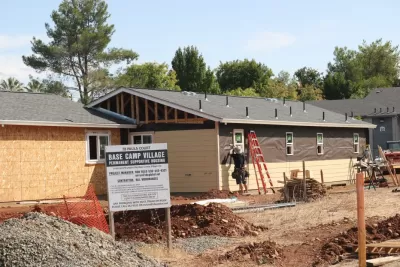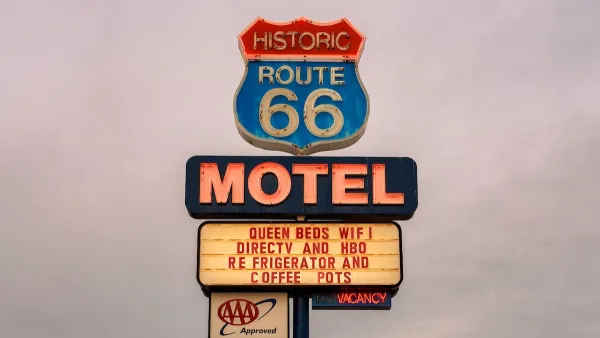How do we balance the need to provide job training to those incarcerated with the need to ensure that prisoners are not exploited for their work?

Programs aimed at creating affordable housing and providing crucial job training for inmates can trace their roots to an innovative program created in South Dakota in the late 1990s.
Bill Janklow, a conservative Republican nicknamed "Wild Bill," pledged to make affordable housing a priority when he was elected to a third term as South Dakota's governor in 1994. Janklow, who died in 2012, spearheaded what’s now known as the Governor’s House Project: small homes built at a lesser cost because they are constructed by inmates who work for free.
Twenty-three years after the program launched, more than 2,000 homes have been sold—two-bedroom houses today can cost $49,700. And in 2019, inmates worked a total of 142,060 hours building the homes, according to the South Dakota Housing Development Authority.
The program has also inspired a similar one that’s set to launch in Missouri this year, while another project in northern California is using inmates to build a 12-unit apartment complex intended for the chronically homeless.
But with the rising focus on rehabilitating inmates comes increased awareness of prisoner exploitation. The Prison Policy Initiative says that when inmates are paid for labor, they can receive as little as nine cents an hour. Inmate advocates are pushing for better standards for workers behind bars.
"They’re providing a service that has value and they should be compensated for it just like everybody else," says Alex Friedmann, managing editor of Prison Legal News and an advocate for the rights of incarcerated people . . .
FULL STORY: Using Inmate Labor to Build Affordable Housing

Planetizen Federal Action Tracker
A weekly monitor of how Trump’s orders and actions are impacting planners and planning in America.

Maui's Vacation Rental Debate Turns Ugly
Verbal attacks, misinformation campaigns and fistfights plague a high-stakes debate to convert thousands of vacation rentals into long-term housing.

San Francisco Suspends Traffic Calming Amidst Record Deaths
Citing “a challenging fiscal landscape,” the city will cease the program on the heels of 42 traffic deaths, including 24 pedestrians.

Defunct Pittsburgh Power Plant to Become Residential Tower
A decommissioned steam heat plant will be redeveloped into almost 100 affordable housing units.

Trump Prompts Restructuring of Transportation Research Board in “Unprecedented Overreach”
The TRB has eliminated more than half of its committees including those focused on climate, equity, and cities.

Amtrak Rolls Out New Orleans to Alabama “Mardi Gras” Train
The new service will operate morning and evening departures between Mobile and New Orleans.
Urban Design for Planners 1: Software Tools
This six-course series explores essential urban design concepts using open source software and equips planners with the tools they need to participate fully in the urban design process.
Planning for Universal Design
Learn the tools for implementing Universal Design in planning regulations.
Heyer Gruel & Associates PA
JM Goldson LLC
Custer County Colorado
City of Camden Redevelopment Agency
City of Astoria
Transportation Research & Education Center (TREC) at Portland State University
Jefferson Parish Government
Camden Redevelopment Agency
City of Claremont





























